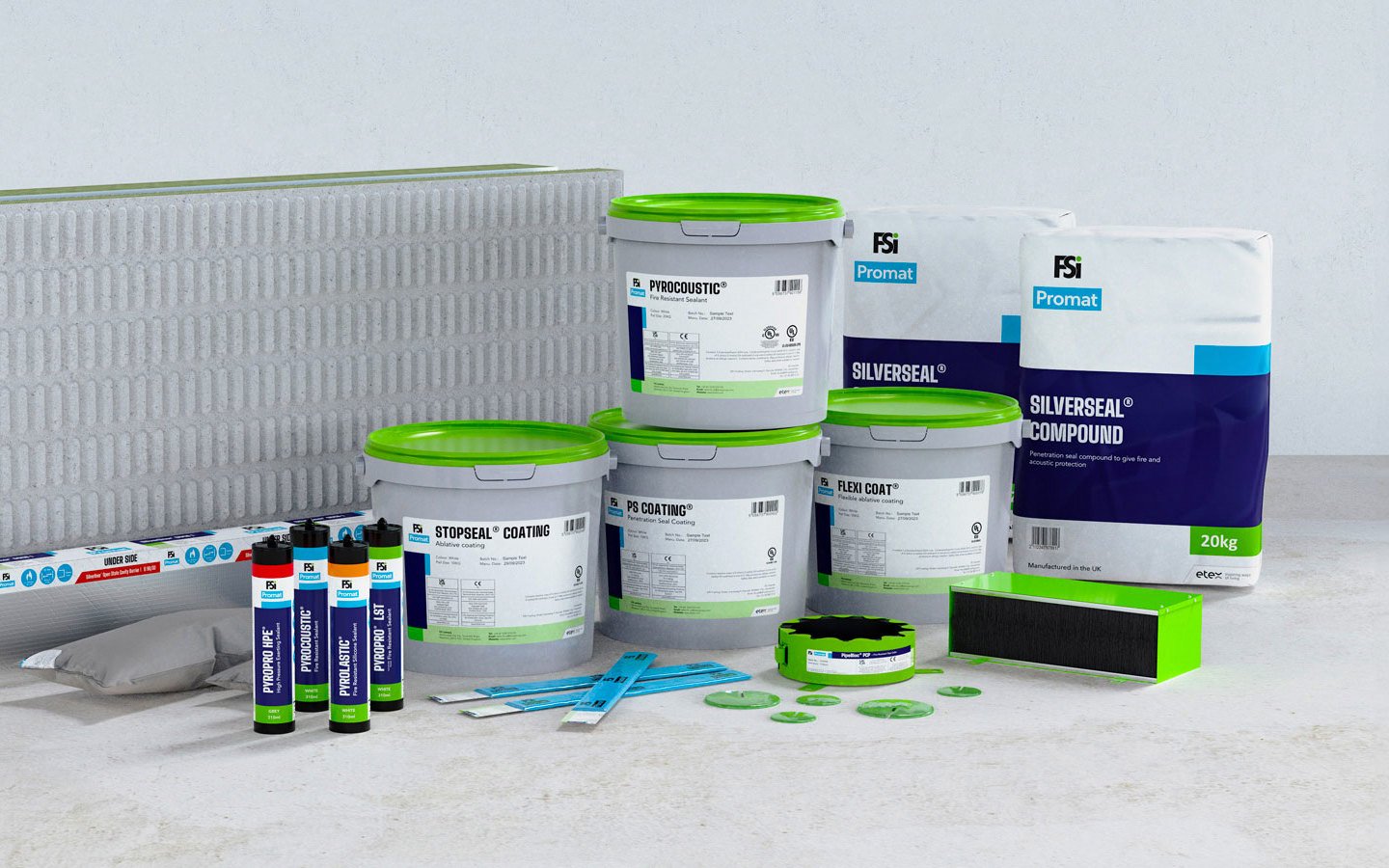Promat Technical Support
Contact our technical support team with your questions on passive fire protection solutions, our products and systems or installation advice.
The fundamental premise of modern fire protection is based on the principles of compartmentation. Every building is designed into several fire resistant compartments, to prevent or slow the spread of fire and smoke from one compartment to another. Essential building services — water pipes and electrical cables, for example - penetrate compartment walls and ceilings. These have the potential to seriously risk the integrity of the fire compartment, unless special and proven fire stopping systems are employed. FSi Promat fire stopping systems restore the fire compartment to its original levels of fire performance.
FSi Promat provides a number of integrated and effective fire stopping solutions for penetration seals, linear joints and cavity barriers, including:

To create a comprehensive passive fire protection system, all gaps in walls, floors and ceilings need to be fire stopped to prevent the spread of flames, smoke and toxic gases. These holes vary in size from single cables through to cable bundles, cable trays, ducts and pipes of varying shapes and sizes. Gaps can also be designed-in to accommodate structural movement within the building.
More information available in the Technical Data Sheets and 3rd party certification documents.